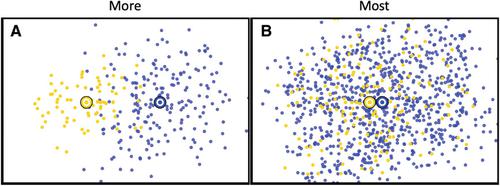当前位置:
X-MOL 学术
›
Ann. N. Y. Acad. Sci.
›
论文详情
Our official English website, www.x-mol.net, welcomes your feedback! (Note: you will need to create a separate account there.)
Linguistic meanings as cognitive instructions
Annals of the New York Academy of Sciences ( IF 5.2 ) Pub Date : 2021-05-28 , DOI: 10.1111/nyas.14618 Tyler Knowlton 1 , Tim Hunter 2 , Darko Odic 3 , Alexis Wellwood 4 , Justin Halberda 5 , Paul Pietroski 6 , Jeffrey Lidz 1
Annals of the New York Academy of Sciences ( IF 5.2 ) Pub Date : 2021-05-28 , DOI: 10.1111/nyas.14618 Tyler Knowlton 1 , Tim Hunter 2 , Darko Odic 3 , Alexis Wellwood 4 , Justin Halberda 5 , Paul Pietroski 6 , Jeffrey Lidz 1
Affiliation

|
Natural languages like English connect pronunciations with meanings. Linguistic pronunciations can be described in ways that relate them to our motor system (e.g., to the movement of our lips and tongue). But how do linguistic meanings relate to our nonlinguistic cognitive systems? As a case study, we defend an explicit proposal about the meaning of most by comparing it to the closely related more: whereas more expresses a comparison between two independent subsets, most expresses a subset–superset comparison. Six experiments with adults and children demonstrate that these subtle differences between their meanings influence how participants organize and interrogate their visual world. In otherwise identical situations, changing the word from most to more affects preferences for picture–sentence matching (experiments 1–2), scene creation (experiments 3–4), memory for visual features (experiment 5), and accuracy on speeded truth judgments (experiment 6). These effects support the idea that the meanings of more and most are mental representations that provide detailed instructions to conceptual systems.
中文翻译:

作为认知指令的语言意义
像英语这样的自然语言将发音与意义联系起来。语言发音可以通过将它们与我们的运动系统(例如,与我们的嘴唇和舌头的运动)相关联的方式来描述。但是语言意义如何与我们的非语言认知系统相关联?作为一个案例研究,我们通过将它与密切相关的more进行比较来捍卫关于most含义的明确提议:而more表达了两个独立子集之间的比较,大多数表示子集-超集比较。六项针对成人和儿童的实验表明,他们含义之间的这些细微差别会影响参与者组织和询问他们的视觉世界的方式。在其他相同的情况下,将单词从most更改为more会影响图片-句子匹配(实验 1-2)、场景创建(实验 3-4)、视觉特征记忆(实验 5)以及快速真理判断的准确性的偏好(实验 6)。这些效应支持这样一种观点,即更多和大多数的含义是为概念系统提供详细说明的心理表征。
更新日期:2021-05-28
中文翻译:

作为认知指令的语言意义
像英语这样的自然语言将发音与意义联系起来。语言发音可以通过将它们与我们的运动系统(例如,与我们的嘴唇和舌头的运动)相关联的方式来描述。但是语言意义如何与我们的非语言认知系统相关联?作为一个案例研究,我们通过将它与密切相关的more进行比较来捍卫关于most含义的明确提议:而more表达了两个独立子集之间的比较,大多数表示子集-超集比较。六项针对成人和儿童的实验表明,他们含义之间的这些细微差别会影响参与者组织和询问他们的视觉世界的方式。在其他相同的情况下,将单词从most更改为more会影响图片-句子匹配(实验 1-2)、场景创建(实验 3-4)、视觉特征记忆(实验 5)以及快速真理判断的准确性的偏好(实验 6)。这些效应支持这样一种观点,即更多和大多数的含义是为概念系统提供详细说明的心理表征。


























 京公网安备 11010802027423号
京公网安备 11010802027423号